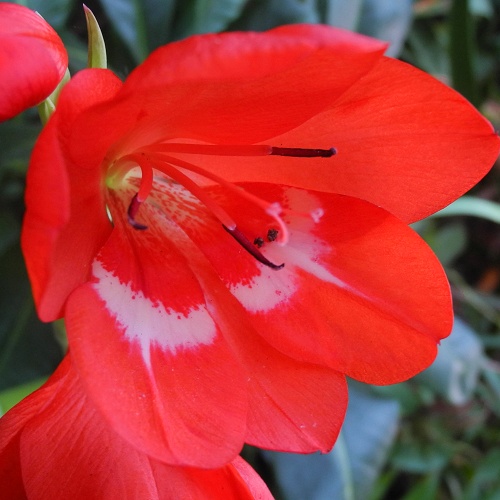Germinating the seeds
When to plant -- Start your seeds indoors around February. Until then, keep them at room temperature, not in the refrigerator. (In the Southern Hemisphere: keep them at room temperature until February, then put them in the refrigerator until August, then plant them.) Soil -- Use well draining soil. A typical mix is 2 parts potting soil mixed with 1 part perlite or pumice. An alternate mix is 1 part coir fiber to 1 part perlite or coarse horticultural sand, with some granular fertilizer mixed in. You may sow them in a single container or in individual small pots. Either way, leave them in their pot the first season until they go dormant. Fill the container(s) and add water until evenly moist (but not fully saturated). Place the seeds on top and cover with thin layer of soil (1/4 inch / 5 mm). Water the top soil layer carefully so the seeds don't get disturbed from their position. Until the seeds sprout, keep the soil moist. If you enclose the pots in a propagation dome or plastic box, leave it open slightly to allow fresh air to circulate. Keep them between about 70 and 80 degrees F
(21-27°C) during the day, and between 55 and 65°F (13-18°C) at night.
I have no experience germinating them outside that temperature range. I
recommend placing a
minimum/maximum thermometer The seeds should begin sprouting within about 6 weeks and continue for a month, but some may take longer. Continue keeping the soil surface moist for 2 months after they sprout. Lighting -- Give them bright light once they sprout. An LED or fluorescent bulb kept 3-4 inches (8-10 cm) away provides the right amount of light while they are young (See: "Growing indoors with LED lights"). Older plants may be grown in full sun though, at least in cooler conditions. In hotter climates, it might be necessary to give some afternoon shade, and also keep the pot shaded, perhaps by placing it inside a second, larger pot that is then filled with soil. Fertilizing -- The first 3 months, feed
once a week with a small amount of dilute liquid fertilizer (1/8 strength).
Hydroponic fertilizer
is ideal for small seedlings, because it is easily absorbed and contains all
essential nutrients. After 3 months, you may switch to a granular
fertilizer Watering -- Try to keep the soil evenly moist, but not fully saturated. Avoid letting it dry out completely, except when the bulbs go dormant in autumn. Climate -- I believe it can handle summer heat provided that nights are cool (below 65°F / 18°C). It is untested in hotter climates with warm nights. I recommend keep the roots cool in hot conditions, perhaps by placing the pot inside a larger pot made of clay. Support -- They tend to lean over as they grow, since they grow sideways on steep cliffs in the wild. If you wish, you may support it upright, perhaps with stakes or in a small tomato cage. Dormancy care -- When the leaves start to die back in autumn, withhold all water, since the bulb is preparing for dormancy. Once the leaves are brown, you may either pull the bulbs and store them in a paper bag until spring, or leave them in their soil. Keep the soil relatively dry until spring or the bulbs may rot. A small amount of moisture is okay, especially to keep the soil from becoming bone-dry. Store the pot in a cool area (50-70°F / 10-21°C) until late February. Check on them in early February to see if any are sprouting, and plant any that are. If you have questions, feel free to contact me. Have fun growing them! - Jeff Strange Wonderful Things
|
|||||||||


